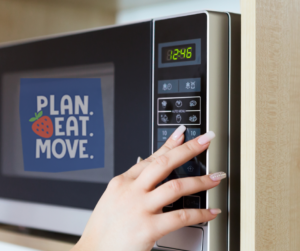Microwave ovens are not just kitchen gadgets; they are our handy companions in a world that moves at lightning speed. These small appliances are staples in our homes and break rooms and offer several advantages in our fast-paced lives.

Efficiency and Convenience: Microwave ovens are energy-efficient wonders. They outshine conventional and toaster ovens in terms of energy use. The best part? They won’t turn your kitchen into a sauna. Cleaning is a breeze too – a quick wipe with warm water and mild detergent is all it takes. Need to defrost frozen goodies in a hurry? A microwave oven is your culinary superhero.
Nutrient-Packed Goodness: Cooking fruits and veggies in a microwave preserves more nutrients because it requires minimal water. This means you can savor the flavors and health benefits of your garden’s bounty or the local farmer’s market with a microwave’s help.
How Microwaves Work: Microwaves are like invisible chefs in your oven, blending electrical and magnetic energy to cook your food. Contrary to popular belief, microwaved foods cook from the outside in. The waves bounce around, making water molecules in your food dance, creating the heat needed to cook your meals.
Cooking Safely and Effectively: To make the most of your microwave, follow these safety tips. Use only microwave-safe containers like glass, plastic, paper, or ceramic. Say no to single-use trays that come with microwave food products. A simple touch test can tell you if a container is microwave-safe – if it’s hot after 15 seconds of “cooking” an empty container, it’s a no-go.
Warding Off Cold Spots: Cold spots are the enemies of microwave cooking, leaving some areas undercooked and potentially dangerous. To combat this, cover your food with a glass lid or vented microwave-safe plastic wrap. Adding a bit of water and stirring during cooking ensures even heating. Always check the doneness of your food before digging in.
Safe Temperatures Matter: Using a meat thermometer is your kitchen ally. Red meat should hit 160°F, poultry 180°F, and leftovers a minimum of 165°F. Eggs and fish should meet specific criteria for safety.
Defrosting and Beyond: Microwaves excel at defrosting, but remember, it’s low-level cooking. Always follow up with thorough cooking to eliminate any lurking bacteria. If you’re using multiple cooking methods, transition your food promptly to the next heat source.
Don’t Skip Standing Time: Recipes often include standing time, and it’s not just a suggestion. This extra time allows your food to finish cooking even after the microwave has powered down.
In conclusion, microwave ovens are more than just buttons and timers – they’re our time-saving kitchen allies. With a sprinkle of caution and a dash of knowledge, you can make the most of your microwave, enjoying delicious and safely cooked meals in no time. Reach out to your local County Extension Service for more food safety and cooking tips.
Source: Sandra Bastin, Extension Professor; LaToya Drake, Program Coordinator
